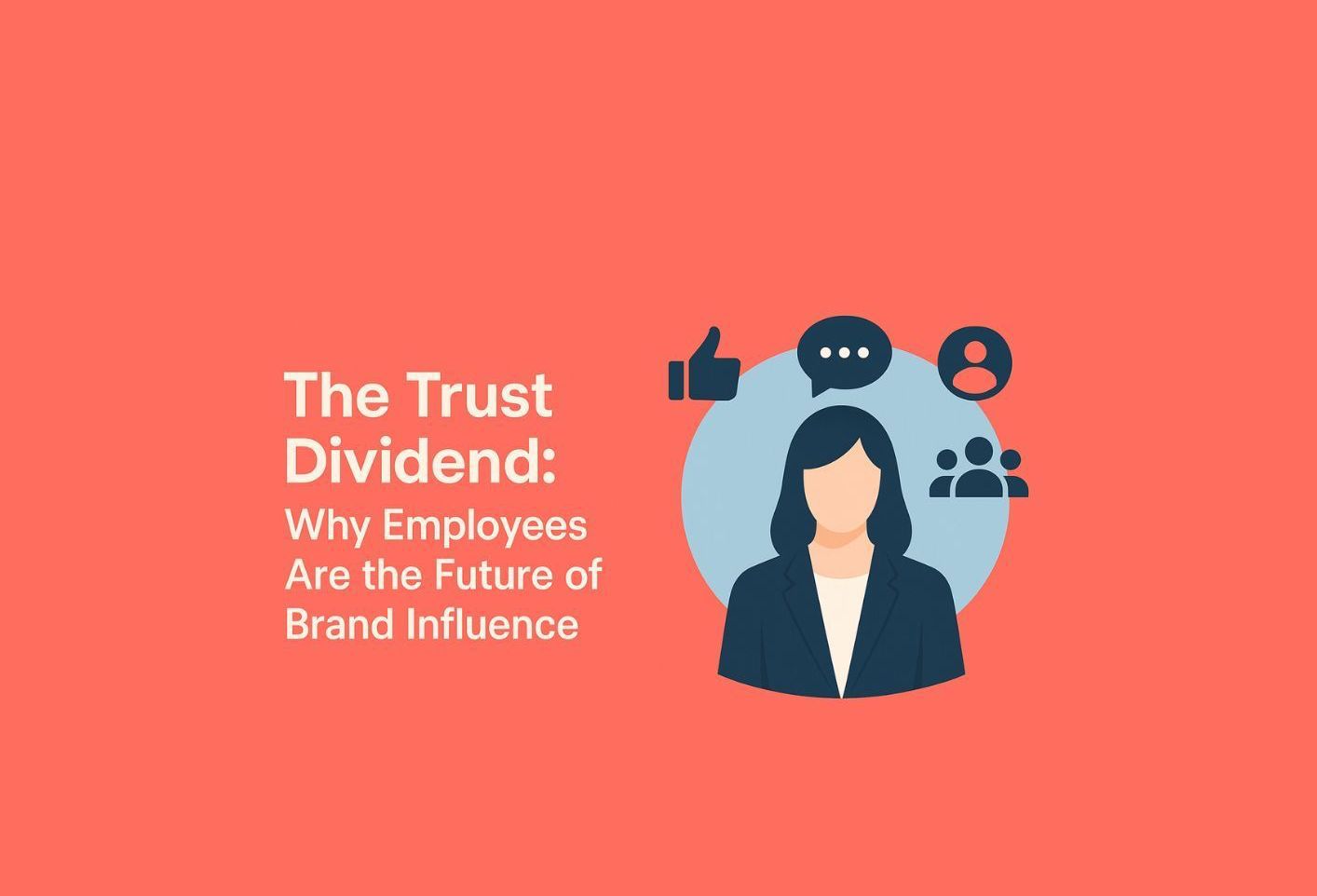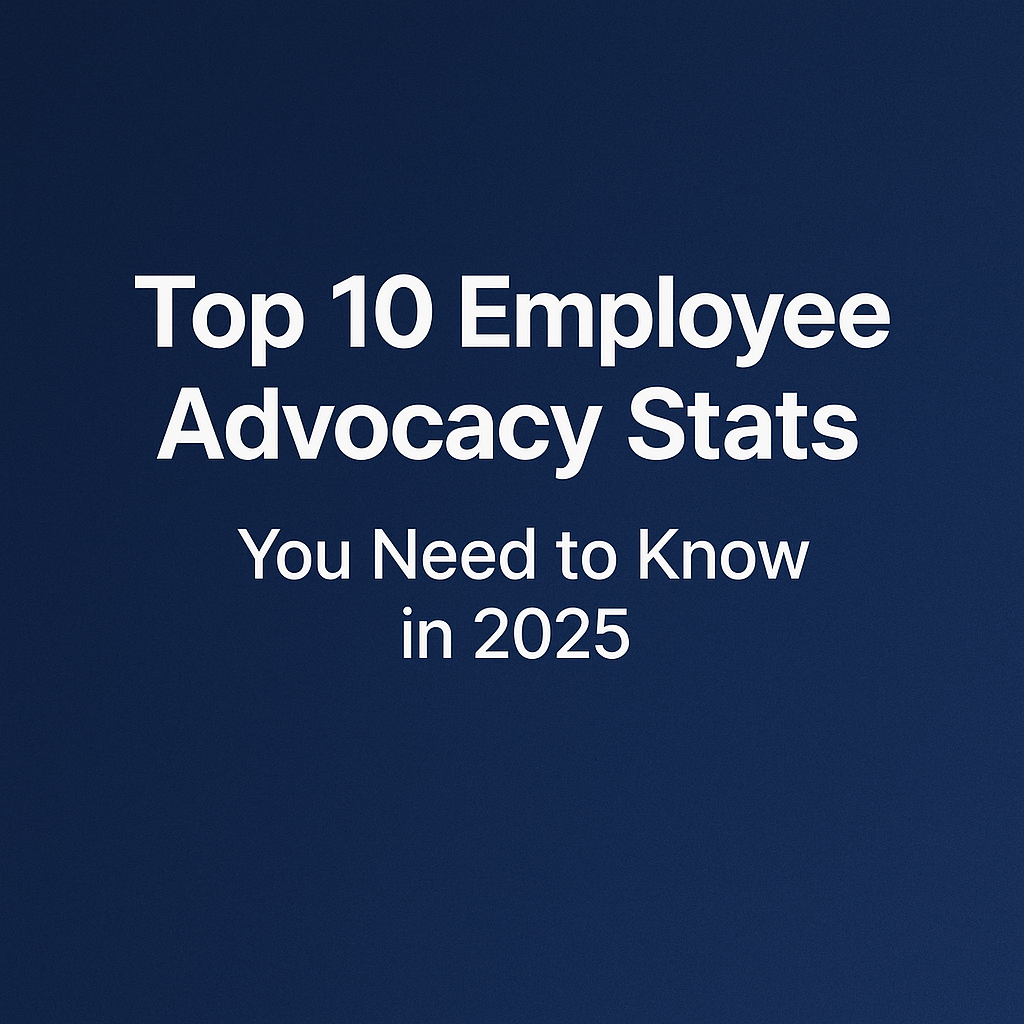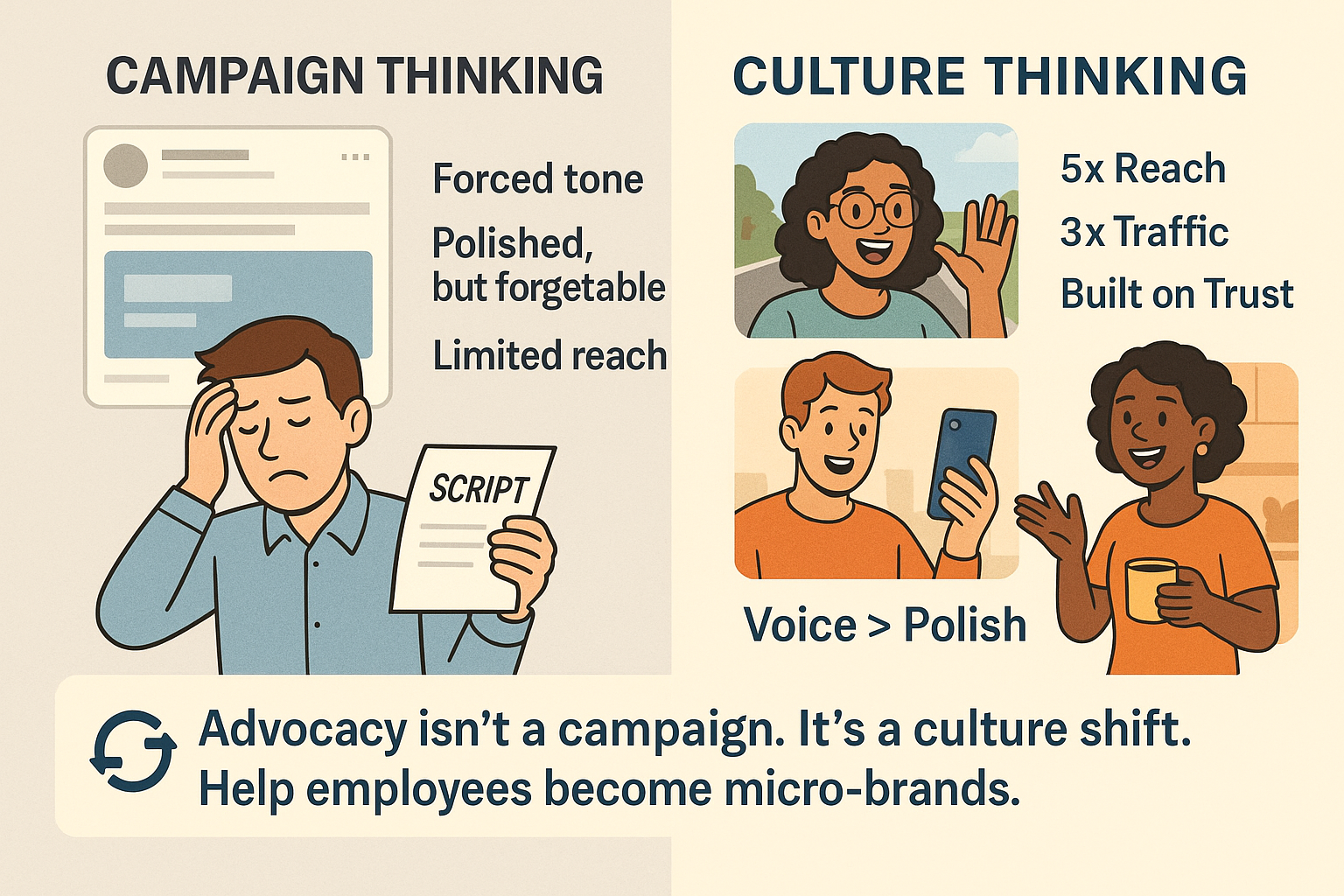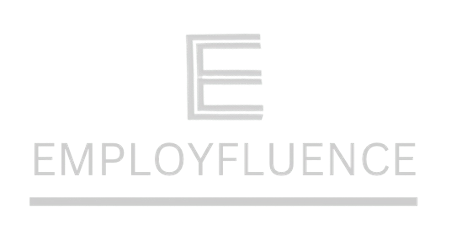The Trust Dividend

The Trust Dividend: Why Employees Are the Future of Brand Influence
Research conducted by Mark Stephens
Written by Mark Stephens and Gordon Glenister
Commissioned by Employfluence
1. Introduction: The Decline of Corporate Trust
We live in a world that is increasingly cynical of corporate narratives, and where trust has become both scarce and invaluable. According to the 2024 Edelman Trust Barometer, trust in government, media, and business continues to wane, with only 42% of global respondents believing business leaders tell the truth. Marketing departments have spent billions attempting to patch this credibility gap with slick campaigns, influencer tie-ins, and elaborate brand personas. Yet audiences—both B2C and B2B—are tuning out.
What, then, is the alternative?
It turns out, the answer is hiding in plain sight: your employees. When individuals within organisations share insights, opinions, or behind-the-scenes content, it resonates with audiences in a way corporate messages rarely do. People trust people—not logos. As Forrester and LinkedIn's Talent Trends have noted, peer voices now outperform brand channels in terms of engagement, influence, and authenticity.
Welcome to the age of the Trust Dividend.
2. The Rise of Peer Influence in B2B and B2C
Influencer marketing in the consumer world paved the way—but its trust ceiling is cracking. As audiences become more media-savvy, the halo of macro-influencers dims. In B2B contexts, the shift is even more dramatic. A recent LinkedIn study revealed that employees collectively have 10x more social reach than their company pages, and their content garners significantly higher engagement.
In both arenas, the peer effect reigns supreme. B2B buyers are 2x more likely to trust recommendations from employees over senior executives (Edelman, 2024). Whether it’s a software engineer sharing her favourite productivity tool, or a customer success manager spotlighting real user stories, the message lands because it comes from a perceived peer—not a paid promoter.
3. What Makes Employees More Credible?
Three qualities define employee trustworthiness:
1. Proximity – They’re close to the product, service, or culture.
2. Authenticity – They speak with personality, not polish.
3. Lack of perceived agenda – Unlike marketing, employees aren’t usually incentivised by performance.
This trust equation is why 72% of consumers trust a company more when employees share content about it online (LinkedIn Marketing Blog, 2024).
Culturally, this shift aligns with Maslow’s Hierarchy of Needs—employees increasingly seek purpose and community at work. Empowering them to tell their stories fulfils a personal need for expression while amplifying organisational credibility.

4. Advocacy vs Advertising: Comparative ROI
Paid media vs. people-powered media is no longer a fight—it’s a reallocation conversation. Consider the numbers:
- • Average CPC on LinkedIn: £5.20
- • Average engagement on brand posts: 0.8%
- • Average engagement on employee-shared content: 4.5%
An Employfluence fintech client saw a 60% drop in recruitment ad spend simply by activating 50 internal advocates on LinkedIn. In another case, a SaaS brand tripled its career site traffic within 10 weeks—no ads, just people.
The Advocacy Flywheel, adapted from HubSpot's growth model, illustrates the compounding nature of this channel:
- Enable employees through training.
- Empower them with tech and permission.
- Elevate their voices with feedback and recognition.
- Expand the program through visibility, community, and gamification.
Unlike paid campaigns with start-stop cycles, employee advocacy builds momentum. It creates not just impressions—but trust equity.
5. Case Studies: Brands That Got It Right
Employfluence x Fintech Scale-Up
Faced with expensive recruitment and low Glassdoor traction, this fintech brand piloted an advocacy cohort of 50 employees. With coaching and community support, they doubled organic LinkedIn reach and reduced their time-to-hire by 40%.
Series B SaaS Company
This client used Employfluence to activate 25 social champions. Within 10 weeks:
- Career site traffic rose 3x
- 40% increase in candidate applications
- Engagement from passive candidates increased by 2.8x
External Example: Tribal Impact
Through structured training and personal brand enablement, a global B2B consultancy grew its content reach by 5x using employee voices—without increasing content volume.
6. Metrics That Matter: How to Track Advocacy Impact
Advocacy isn’t about vanity metrics—it’s about impact. Here’s what to track:
- • Employee Activation Rate (EAR): % of employees regularly sharing content
- • Earned Reach vs Paid Reach: Impressions and engagements gained without media spend
- • Content Amplification Rate: Shares per post / total posts shared by advocates
- • Attribution Metrics: Applications, MQLs, or demos linked to employee content
- • Advocacy Share of Voice (ASoV): How much of your brand's social presence is employee-led
Employfluence’s platform integrates tools like Shield Analytics, Google Analytics, and UTM tracking to give clients full-funnel visibility.
7. Practical Tips: Getting Started, Next Steps, Advanced Strategies
Getting Started
- • Run an Advocacy Readiness Audit across HR and Marketing
- • Identify early champions (those already active online)
- • Choose a pilot team or business unit
Next Steps
- • Offer coaching modules and personal brand templates
- • Create an internal leaderboard (opt-in, culture-sensitive)
- • Launch a "Real Voices" content series on LinkedIn
Advanced Strategies
- • Introduce gamification (badges, rewards, spotlight features)
- • Use AI tools (like Employfluence) to suggest content ideas and track performance
- • Integrate with EVP and internal comms to reinforce brand pillars
8. Why It Works (and Why It’s Hard to Fake)
Employee advocacy succeeds because it’s human. And humans don’t scale like software.
It’s this friction—this imperfection—that makes advocacy believable. You can’t fake tone, lived experience, or earned influence. That’s why employee-shared stories convert. And why Employfluence's hybrid model—training + tech + community—outperforms pure software platforms like DSMN8 or Sociabble.
Advocacy isn’t a tool—it’s a culture.
9. Conclusion: Trust Is the New Marketing Currency
When every brand sounds the same, trust is your true differentiator. Employees—not ads—are now the face, voice, and heartbeat of great companies.
Mid-sized and enterprise brands looking to futureproof growth must ask:
Are we empowering the voices we already have?
Because the brands that win tomorrow are those who turn their people into powerful advocates today.
10. References & Citations
- Edelman Trust Barometer (2024) – https://www.edelman.com
- LinkedIn Talent Trends – https://business.linkedin.com/talent-solutions/blog
- HubSpot State of Inbound Marketing – https://research.hubspot.com
- IBM Institute for Business Value – https://www.ibm.com/thought-leadership
- Forrester Research Reports – https://go.forrester.com/research
- Content Marketing Institute – https://contentmarketinginstitute.com
- 360Pro.ai Brand Strategy Article – https://360pro.ai/news/brand-management
- Employfluence Go-To-Market Playbook (2025)
- Tribal Impact, DSMN8, Sociabble blogs and websites (2023–2024)
- Gartner B2B Buying Journey Model
- Maslow’s Hierarchy of Needs (applied to employer brand trust)
More about the article sponsor
Employfluence helps brands build real trust by making employees visible, credible, and influential. Learn more at employfluence.com or request a free consultation to explore how advocacy could transform your growth strategy.
About the author
Gordon Glenister is a leading expert in influencer marketing and membership growth. With a strong track record of helping businesses and individuals raise their profile, Gordon specializes in developing influencer marketing strategies that drive thought leadership and lead generation. He also works closely with membership organizations to foster growth and deliver meaningful member experiences. Gordon’s insights and strategies have positioned him as a trusted voice in the evolving landscape of digital influence and community engagement.
Mark Stephens is a seasoned entrepreneur and Business Growth Coach, specialising in Growth Strategy for SMEs. As the founder of multiple tech-enabled startups—including OCCY, Tec2i, BookMyDemos.com, and 360Pro.ai—Mark combines hands-on experience with expert knowledge in digital marketing, lead generation, content writing, and research. He helps business owners unlock sustainable growth, attract high-quality leads, and turn strategy into results.
Contact Us
We will get back to you as soon as possible.
Please try again later.



